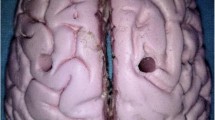Abstract
Objective.To implement a realistic autoregulation mechanism toenhance an existing educational brain model that displays in real-time thecerebral metabolic rate (CMRO2), cerebral blood flow (CBF),cerebral blood volume (CBV), intracranial pressure (ICP), and cerebralperfusion pressure (CPP). Methods.A dynamic cerebrovascular resistance(CVR) feedback loop adjusts automatically to maintain CBF within a range ofthe CPP and defines autoregulation. The model obtains physiologic parametersfrom a full-scale patient simulator. We assumed that oxygen demand andarterial partial pressure of carbon dioxide (CO2 responsivity) arethe two major factors involved in determining CBF. In addition, our brainmodel increases oxygen extraction up to 70% once CBF becomes insufficient tosupport CMRO2. The model was validated against data from theliterature. Results.The model's response varied less than 9%from the literature data. Similarly, based on correlation coefficients betweenthe brain model and experimental data, a good fit was obtained for curvesdescribing the relationship between CBF and PaCO2 at a meanarterial blood pressure of 150 mm Hg (R2 = 0.92) and 100 mm Hg(R2 = 0.70). Discussion.The autoregulated brain model, withincorporated CO2 responsivity and a variable oxygen extraction,automatically produces changes in CVR, CBF, CBV, and ICP consistent withliterature reports, when run concurrently with a METI full-scale patientsimulator (Medical Education Technologies, Inc., Sarasota, Florida). Once themodel is enhanced to include herniation, vasospasm, and drug effects, itsutility will be expanded beyond demonstrating only basic neuroanesthesiaconcepts.
Similar content being viewed by others
REFERENCES
Michenfelder JD. Anesthesia and the Brain. New York: Churchill Livingstone, 1988: 3–21
Sulek C. Intracranial pressure. In: Black S, Cucchiara RF, Michenfelder JD, eds. Clinical neuroanesthesia, 2nd ed. NewYork: Churchill Livingstone, 1998: 73–123
Leenders L, Perani D, Lammertsma AA, Heather JD, Buckingham P, Healy MJR, Gibbs JM, Wise RJS, Hata-zawa J, Herold S, Beaney RP, Brooks DJ, Spinks T, Rhodes C, Frackowiak RSJ, Jones T. Cerebral blood flow, blood volume and oxygen consumption. Brain 1990; 113: 27–47
Thoman WJ, Lampotang S, Gravenstein D, van der Aa J. A computer model of intracranial dynamics integrated to a full-scale patient simulator. Comput Biomed Res 1998; 31: 32–46
Lampotang S, Good ML, van Meurs WL, Caravano RG, Azukas J, Rueger EM, Gravenstein JS. The University of Florida/Loral Human Patient Simulator (abstract). J Anesth 1995; 9: SS1–5
Young WL, Ornstein E. Cerebral and spinal cord blood flow. In: Cottrell JE, Smith DS, eds. Anesthesia and neurosurgery. St. Louis, MO: Mosby-Year Book, Inc., 1994: 17–58
Jones MD, Traystaman RJ, Simmons MA, Molteni RA. Effects of changes in arterial O2 content on cerebral blood flow in the lamb. Am J Physiol 1981, 240: H209–H215
Drummond JC, Shapiro HM. Cerebral physiology. In: Miller RD, ed. Anesthesia. NewYork: Churchill Livingstone, 1994: 689–729
Ellingsen I, Hauge A, Nicolaysen G, Thoresen M, Walloe L. Changes in human cerebral blood flow due to step changes in PaO2 and PaCO2. Acta Physiol Scand 1987; 129: 157–163
Croughwell N, Smith LR, Quill T, Newman M, Greeley W, Kern F, Lu J, Reves JG. The effect of temperature on cerebral metabolism and blood flow in adults during cardiopulmonary bypass. J Thorac Cardiovasc Surg 1992; 103: 549–554
Greeley WJ, Kern FH, Ungerleider RM, Boyd JL, Quill T, Smith LR, Baldwin B, Reves JG, Sabiston DC. The effect of hypothermic cardiopulmonary bypass and total circulatory arrest on cerebral metabolism in neonates, infants, and children. J Thorac Cardiovasc Surg 1991; 101: 783–794
Barash PG, Cullen BF, Stoelting RK. Handbook of Clinical Anesthesia. Philadelphia: JB Lippincott Company, 1991: 452
Guyton AC, Hall JE. Textbook of Medical Physiology. Philadelphia: WB Saunders Company, 1996: 513–520
Fitch W. Cerebral metabolism. In: Cottrell JE, Smith DS, eds. Anesthesia and neurosurgery. St. Louis, MO: Mosby-Year Book, Inc., 1994: 1–16
Chan KH, Miller JD, Dearden NM, Andrews PJD, Midgley S. The effects of changes in cerebral perfusion pressure upon middle cerebral artery blood flow velocity and jugular bulb venous oxygen saturation after severe brain injury. J Neurosurg 1992; 77: 55–61
Harper AM, Glass HI. Effect of alterations in the arterial carbon dioxide tension on the blood flow through the cerebral cortex at normal and low arterial blood pressures. J Neurol Neurosurg Psychiatry 1965; 28: 449–452
Burney RG, Winn R. Increased cerebrospinal fluid pressure during laryngoscopy and intubation for induction of anesthesia. Anesth Analg 1975; 54: 687–690
Ursino M, Di Giammarco P. A mathematical model of the relationship between cerebral blood volume and intracranial pressure changes: The generation of plateau waves. Ann Biomed Eng 1991; 19: 15–42
Ursino M. A mathematical study of human intracranial hydrodynamics. Part 1 – The cerebrospinal fluid pulse pressure. Ann Biomed Eng 1988, 16: 379–401
Drummond JC. The lower limit of autoregulation: Time to revise our thinking? (Letter) Anesthesiology 1997; 86: 1431–1433
Lanier WL, Albrecht RF, Iaizzo PA. Divergence of intracranial and central venous pressures in lightly anesthetized, tracheally intubated dogs that move in response to a noxious stimulus. Anesthesiology 1996; 84: 605–613
Author information
Authors and Affiliations
Rights and permissions
About this article
Cite this article
Thoman, W.J., Gravenstein, D., van der Aa, J. et al. Autoregulation in a Simulator-Based Educational Model of Intracranial Physiology. J Clin Monit Comput 15, 481–491 (1999). https://doi.org/10.1023/A:1009998606087
Issue Date:
DOI: https://doi.org/10.1023/A:1009998606087




